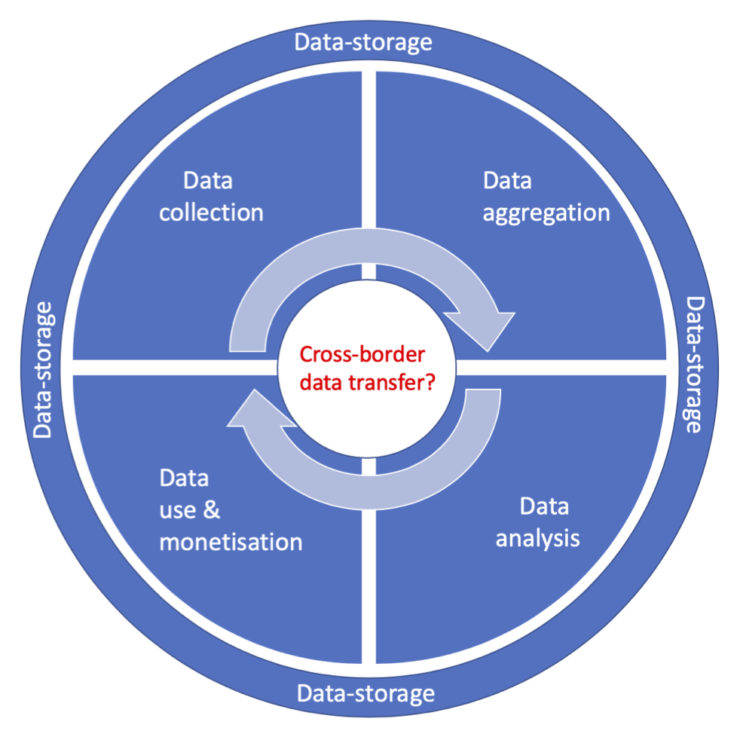By David Nguyen
The process of collecting, aggregating and analysing data for the purpose of successful operation is nothing new for companies. However, the amount and variety of data they use has increased dramatically in recent years. Crucially, an increasing use of data as an (unmeasured) input in production could mean that key economic statistics such as output and productivity become seriously flawed (OECD, 2020).
COVID-19 is accelerating the digital transformation of our private and professional lives (Coyle and Nguyen, 2020), and digital business models are pushed into all corners of the economy. This means that more and more data is being produced and used to create new products and services. We need to get a better understanding of the economic value of data to future-proof economic statistics. In a recently released paper (Nguyen and Paczos, 2020) we engage with some of these issues in more detail. We develop a framework based on how businesses monetise data and propose a taxonomy of data types and characteristics that are associated with the economic value of data.
Drawing on real-world examples we discuss strategies used by businesses to monetise data, and distinguish four main types:
- selling or licensing of data
- selling entirely new data-related products
- using data to improve or enhance existing products
- using data to improve overall productive capacities and efficiency
Based on this we develop the concept that businesses can be data-enabled or data-enhanced. Broadly speaking, data-enabled businesses have developed revenue generation strategies fully reliant on data. They would not exist without access to large amounts of data and advanced data analytics. On the other hand, data-enhanced businesses exploit data to better coordinate pre-existing business operations, facilitate decision-making and to introduce improved goods and services. However, data and data analytics do not alter or determine their core business models.

We put those strategies together in a framework covering data monetisation strategies across different business models (see Figure 1) which can be used to assess the degree to which businesses are relying on data to generate revenue.
To further investigate how data can be used in the value-generation process we elaborate on the concept of the ‘data value chain’. It is composed of four stages: data collection, aggregation, analysis, and monetisation. Considering that digitalisation enables the physical detachment of the different stages, we derive that moving between stages necessarily involves data flows. While these flows often take place within data centres and single countries, they can in principle also span multiple countries and jurisdictions. As a result, cross-border data flows are directly linked to the creation of economic value, especially since the costs for replicating stages in many countries are often prohibitively high. Finally, since data monetisation itself can be used to collect further data, we propose that the ‘chain’ should actually be better termed a ‘cycle’ (see Figure 2).
The paper continues with a review of existing data taxonomies that can be useful when thinking about the economic (or business) value of data. This is useful because one needs to simultaneously think about the different types of data that exist (e.g. personal, non-personal), as well as the specific characteristics that make data valuable (or some data more valuable than other).

We conclude that there are several ways in which data can be structured into different types. One could emphasise data usage or access rights, the subject or the source of data, the way in which data is being generated (e.g. machine vs user-generated), or the funding source in terms of who pays for data collection. In terms of characteristics, data is generally more valuable if it is linkable, accessible, disaggregated, timely, trustworthy, representative, and scarce/excludable.
While the paper discusses these types and characteristics in more detail, we are certainly aware that this not an exhaustive list and there are countless others that we could specify. Our aim here is to capture the most important dimensions (which could change in the future) and minimise overlap.
In the final section of the paper we turn to economic measurement and the feasibility of different approaches. For example, the cost-based method has been demonstrated to work (Statistics Canada, 2019). It necessarily remains narrow in its focus, making it less suitable for broader estimations of the value of data. Other approaches based on market prices or actual data-driven revenues are much more experimental and less developed altogether.
While this paper makes some progress conceptually, much more research and discussion are needed in the coming years as data continues to become one of the most important (and valuable) economic resources on the planet.
ESCoE blogs are published to further debate. Any views expressed are solely those of the author(s) and so cannot be taken to represent those of the ESCoE, its partner institutions or the Office for National Statistics.



